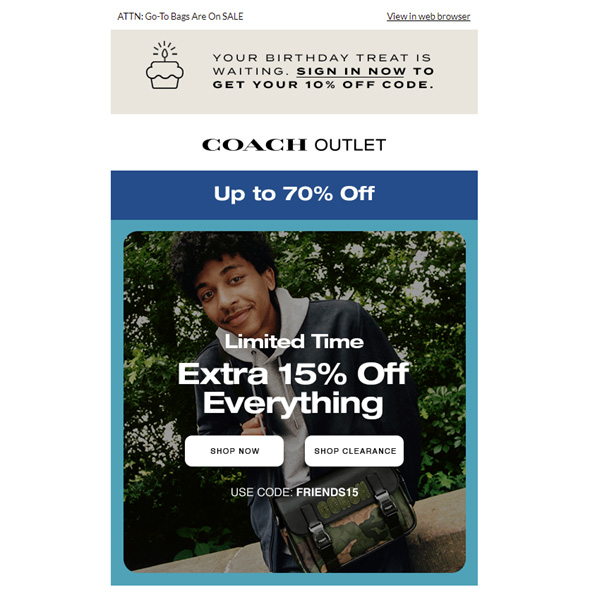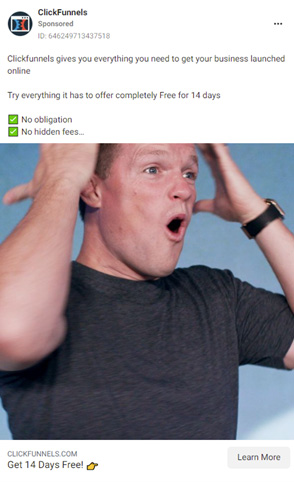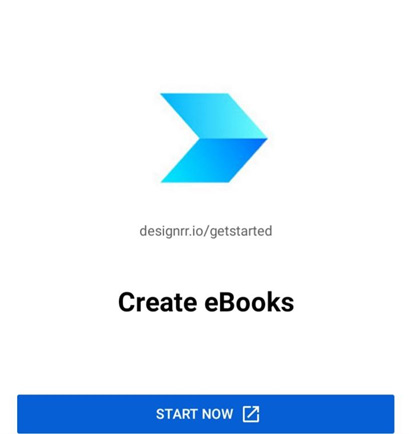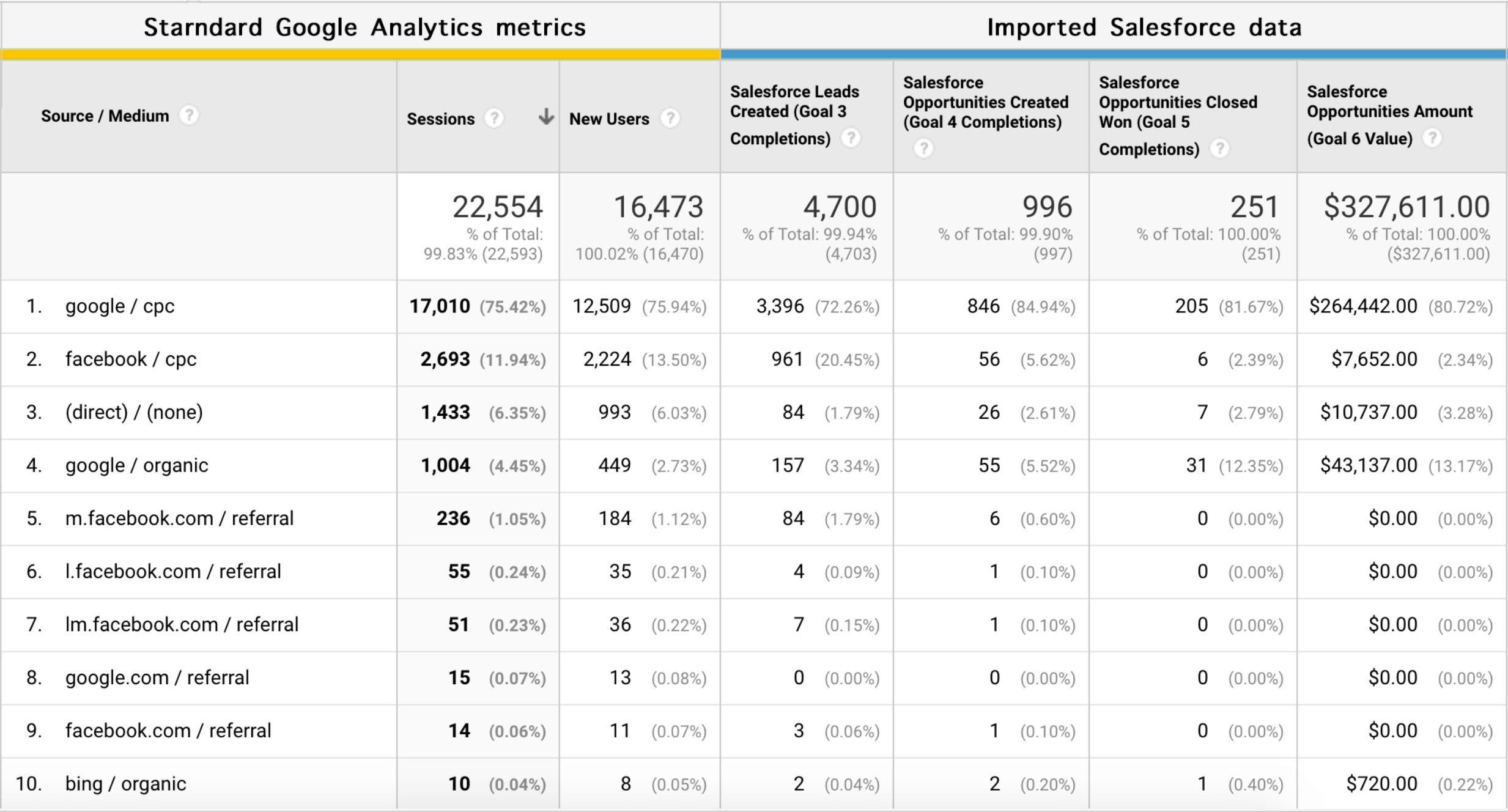Do you recall being asked a question in almost every online survey, “How did you hear about us?” and you wondered why everyone asked this question? Well, that’s because all marketers use UTM parameters (Urchin Tracking Module) to see how much traffic they’re getting from different sources. In the next 2 minutes, I’ll walk you through 7 examples of UTM parameters so you can better understand this concept and effectively create utm parameters for a marketing campaign.
So without further ado, let’s dive into it.
Types of UTM Parameters:
There are five UTM parameters.
| Name | UTM Tag |
| Medium | utm_medium |
| Source | utm_source |
| Campaign | utm_campaign |
| Content | utm_content |
| Term | utm_term |
Let’s look at these UTM parameters individually.
- UTM Medium: You can use campaign medium to check the medium a visitor finds your URL on. For instance, social media, QR code, Cost Per Click (CPC), affiliates, organic / paid ad, newsletters, etc.
- UTM Term: It tracks your keywords for a paid AdWord campaign. However, now that AdWord has its own tracking data, marketers are rarely found using campaign term tag.
- UTM Content: Campaign content comes in handy when you’re A/B testing ads. It also differentiates identical links that direct to the same URL. For example, when you’ve two same links in one email, this parameter distinguishes between the two.
- UTM Campaign: As the name suggests, it’s only used to give a name to your campaign, like Black Friday sale, Thanksgiving sale, launch campaign, etc.
- UTM Source: Campaign source is like a small box inside a giant box. For example, Facebook is a small box within a huge social media box, having both paid and unpaid links. So if you’re running paid campaigns on Facebook to promote an offer, you should mark Facebook as a source within the paid category.
Now that you know the standard utm parameters, let’s see some examples to understand their practical implementation.
Here’s a standard URL without any UTM tags.
www.example.com/product
And the same URL with UTM parameters? There you go!
www.example.com/product?utm_source=new+subscribers&utm_medium=email&utm_campaign=black+friday+sale&utm_content=first+cta+button
Now let’s break it down on a micro level:
- There are four UTM tags used in this example.
- www.example.com/product – It’s a webpage promoting an offer.
- ? – it tells your browser that everything afterward is additional data about the product page.
- utm_source=new+subscribers – the source of this traffic is the new subscribers. + indicates the space between words because spaces can’t be used in a URL.
- Note: %20 also represents a space in a URL.
- & – this suggests that a new UTM date is about to be started.
- utm_medium=email – this defines the medium to be an email. This means any traffic coming from this source would be from this particular email.
- utm_campaign=black+friday+sale – here, the campaign is defined as a Black Friday sale.
- utm_content=first+cta+button – it’s to track the traffic from the first Call to Action (CTA) link.
Simply put, this URL caters to a Black Friday sale for new subscribers that are sent this link via email and can redeem this offer by clicking the CTA button.
Notice I didn’t mention the utm_term? That’s because that’s not really necessary and can be skipped. But always, ALWAYS use medium, source, and campaign tags.
In a nutshell, whether you’re running paid campaigns across marketing channels, and have multiple links to track traffic from, utm tracking links will tell you heaps about the traffic you’re getting from social media vs. web traffic.
7 Best Examples of Using UTM Parameters Effectively:
Let’s now see the examples of UTM across different platforms.
1. UTM in Product/Shopping Campaign:
Here’s what Coach sent to non-buyers.

And here’s the URL.
https://www.coachoutlet.com/shop/utm_medium=em_mktg&utm_source=SFMC&utm_campaign=20220922_WK12_COH_OTL_FriendsFamilyBagsUnder150_FullFile__FY23_US____PERS&sfmc_id=108914146&utm_term=Amperity_COHNA_Outlet_US_Unengaged_NonBuyer
This URL is pretty confusing. But let’s simplify it.
utm_medium: em_mktg
utm_source: SFMC
utm_campaign: 20220922_WK12_COH_OTL_FriendsFamilyBagsUnder150_FullFile__FY23_US____PERS
utm_term: Amperity_COHNA_Outlet_US_Unengaged_NonBuyer
2. UTM in a Travel Website:
That’s what the interface of Get Your Guide looks like.

Now let’s get to its link:
https://www.getyourguide.com/s?partner_id=CXOA4OX&utm_medium=online_publisher&placement=%22other%22&cmp=Milan&q=Milan&et=209769&lc=139
utm_medium: online publisher
This is an affiliate link of a travel blogger that they shared on their blog. Hence the medium online publisher.
3. UTM in a Facebook Campaign:
It’s a Facebook ad by ClickFunnels.

Here’s the link.
https://www.clickfunnels.com/?cf_affiliate_id=513513&affiliate_id=513513&utm_source=facebook&utm_medium=advertising&utm_campaign=CFTrial&utm_term=CFretarget&utm_content=russellreact&fbc_id=6266713392263&h_ad_id=6266713392063&WickedSource=Facebook&WickedID=6266713392063&fbclid=IwAR1LOAYlG8gOsLjPAoef2XSpIfLBJV658ZTVAyC337lUG5Vf6UGRTZ498hc
utm_source: Facebook
utm_medium: advertising
utm_campaign: CFTrial (ClickFunnels Trial)
utm_term: CFretarget (ClickFunnels retargeting ad)
utm_content: russellreact (Russell’s face reaction)
4. UTM from a Sales Campaign:
This is what a Google ad campaign for Zapier looks like.

And now the link.
https://zapier.com/l/home?utm_source=google&utm_medium=cpc&utm_campaign=gaw-gbl-nua-search-desktop-trademark-brand_exact&utm_adgroup=brand_trademark_zapier&utm_term=zapier&utm_content=_pcrid_605859591576_pkw_zapier_pmt_e_pdv_c_slid__pgrid_139732742522_ptaid_aud-809502765494%3Akwd-298647606221_&gclid=Cj0KCQjwsrWZBhC4ARIsAGGUJupvbSvV88DqGKtdD0u212YaJbK7nrRNGlNMVrQKY2zNvZEy1Mpg5XcaAo83EALw_wcB
utm_source: Google
utm_medium: CPC (Cost Per Click
utm_campaign: gaw-gbl-nua-search-desktop-trademark-brand_exact
utm_term: zapier
5. UTM in Youtube Ads Campaign:
This Youtube ad for Grammarly was a hit.

https://app.grammarly.com/?utm_source=youtube&utm_medium=cpc&utm_phase=student&utm_content=Connect60sBrand1description
utm_source: youtube
utm_medium: CPC (Cost Per Click)
utm_content: Connect60sBrand1description
Imagine how conveniently Grammarly can track its traffic sources. And if Youtube further crushes it for them, they can give more of their attention to Youtube to make moolah.
6. UTM in Email Campaign:
And this is what Vitabiotics sent to their email list.

https://www.vitabiotics.com/collections/heart-supplements?medium=email&om_campaign=omme_6d4058fe-0f2_33567_186725&om_send=130fece991e94f20b342df6da5508f98&source=Ometria&utm_campaign=omme_6d4058fe-0f2_autumn_heart_23_09_all_prospects_except_ms&utm_content=variation_a&utm_medium=email&utm_source=ometria
utm_source: ometria
utm_medium: email
utm_content: variation
utm_campaign: omme_6d4058fe-0f2_autumn_heart_23_09_all_prospects_except_ms
7. UTM in Lead Magnet Ads:
And finally, this is a lead magnet ad from Designrr.

https://go2.designrr.io/start-here3?utm_campaign=2020671279&utm_source=g&utm_medium=cpc&utm_content=&utm_term=designrr&ad_id=576584640663&gclid=Cj0KCQjwsrWZBhC4ARIsAGGUJuqoec-bn7AVfxuwsvKJerghL615txZPXEdb9lzXmNcmGhu0-6omsc0aAqrjEALw_wcB
utm_campaign: 2020671279
utm_source: g
utm_medium: CPC (Cost Per Click)
utm_content: designrr
Keep Track of your Leads from their First Visit
A 2012 survey says 82% of people just copy and paste the URL in their browser. Humans, by default, want to make less effort, so this number has been growing ever since. And the most valuable asset to your business is a site visitor who bookmarks your website or types your URL in the search bar.
But those users are just a fraction of those who don’t do that.
While many tools like Google Analytics do a great job at tracking visitors ONLINE, there are many things that they do NOT record.
Allow me to explain it.
Let’s assume an internet user, say John (Hey John!), plans on buying some supplements. He finds Vitabiotics (mentioned above) through Google’s organic search. Next up, he reads a blog post about their process and makes sure they are credible. He jumps from their product page to reading blogs to thier Facebook posts before deciding.
Google Analytics does a decent job tracking some of John’s activities. However, it doesn’t have access to certain blogs, keywords, and ads. And if Vitabiotics wants to do a great job tracking John from his first visit, their marketing team should use a software other than Google Analytics that fills this gap. And that’s where GA Connector comes in.
As the name suggests, it connects Google Analytics / Google Ads to the salesforce and helps you track data of all the different traffic sources, not just users.
If you’ve come this far, the next question you should be asking is…
Why It’s Important to Track UTM Parameters in Your CRM
To calculate how much every channel contributes to making bank.
See, if you spend thousands of dollars on Facebook or Google ads, the last thing you want is not knowing if you’re getting any ROI on that, right?
That’s where importing UTM parameters to CRM comes to the rescue because it gives you a detailed report of:
- What works for your business and what doesn’t
- How many leads did you acquire through different channels
- How much ROI did each channel generate
- And much more.
Not only that, importing data to CRM will always outweigh Google Analytics. Because Google Analytics only summarizes the total number of sessions and new users, and CRM gives a detailed report on new leads, opportunities created, opportunities won, and CRM revenue.
Don’t take my word for it. See it for yourself.

Closed loop reporting in Google Analytics
How to capture lead sources using GA Connector
GA Connector is an integration of CRM and Google Analytics. Its primary function is to help you save leads and their tracking information into a CRM.
Here’s how you can set that up in just a few minutes.
Get a FREE trial of GA Connector right here.
Choose where you store and track your leads. It can either be an advanced CRM system or something as simple as an Excel spreadsheet. (Besides, GA Connector supports almost all database types and contact forms).
And boom! You’re all set for a FREE trial.
Now you’re good to go to capture UTM parameters in your contact forms, along with the geographics of your web traffic.
Take a look at the screenshot below. It shows how GA connector helped Salesforce (a CRM) capture tracking information of a lead.




